May 15, 2018, Severe Weather & Tornadoes
A large outbreak of severe weather spread across Pennsylvania, southeast New York, northern New Jersey and Connecticut on May 15, 2018. Numerous tornadoes and downbursts caused significant damage and tragically claimed 5 lives.
This blog will explore the set up that led to this outbreak of severe weather and compare the impacts of severe wind events vs tornado events.
Severe Weather Setup

There are four main ingredients necessary for severe thunderstorms: instability, moisture, a lifting mechanism, and wind shear. When all four of these factors come together, significant severe weather results.
In the Northeastern United States, it is uncommon to have all four factors coincide at significant levels. Usually, one or two of the ingredients is missing or present only in a limited sense.
On May 15th, the set up quickly evolved during the day where all factors were strongly present.
Instability & Moisture
Hot, humid air moved north into northeastern Pennsylvania and the Hudson Valley during the early afternoon. With cold air aloft, this created a very unstable atmosphere. CAPE, or Convective Available Potential Energy, is a measure of instability. CAPE values over 1000 can produce robust thunderstorms, while values over 2000 can lead to significant severe weather.
CAPE values rose to between 2000-3000 as temperatures pushed into the mid and upper 80s with dewpoints in the 60s. CAPE values this high are not unheard of in the Northeastern United States but still represent a significantly unstable atmosphere. Thunderstorms rapidly developed and strengthened in this unstable atmosphere.
The moist atmosphere also contributed to storm growth. Cloud bases were close to the surface, which makes it easier for tornadoes to form. Torrential rain and flooding were also a result of the high moisture content of the atmosphere.
Lifting Mechanism
An unstable atmosphere on its own will not result in thunderstorms. Something must disturb the atmosphere. Once disturbed, air will rapidly rise, leading to thunderstorms. Frontal boundaries, lake breezes, and even uneven heating along mountain slopes can act as a lifting mechanism.
In this case, there were two major lifting mechanisms in place. First, a strong cold front was crossing the region from northwest to southeast. This front triggered a long line of thunderstorms.
Showers and thunderstorms from Tuesday morning also contributed to storm development during the afternoon. Rain cooled air from the morning precipitation acted as a mini-cold front that was draped from west to east out ahead of the main front. This phenomenon is called an outflow boundary.
During the early afternoon, supercell thunderstorms developed well out ahead of the cold front along this outflow boundary.
Wind Shear
The final piece for severe weather is wind shear. Wind shear is a generalized term to describe differences in the wind fields. Differences in wind direction and in wind speed both can contribute to shear.
You can easily demonstrate the effect of wind shear on the atmosphere. Grab a pencil or pen and place it between your hands. Now, move both hands in the same direction, but move your top hand faster. The faster motion above causes the pencil to spin.
The same thing happens in the atmosphere. As winds travel at different speeds and/or directions in close proximity, the air currents spin into eddies. When a thunderstorm ingests that spin, it can sometimes lead to tornadoes.
Another important result of wind shear is the storms become a balance, self-sustaining engine.
Thunderstorms ingest warm, humid air to feed the storm and exhaust cold air from higher in the atmosphere as the rain falls. Without wind shear, the cold air quickly cuts off the warm air, and the thunderstorm collapses on itself. With ample shear, however, a balance is struck where the storm is both ingesting and exhausting simultaneously. This, in turn, allows the storm to strengthen and organize.
There were a number of factors on May 15th contributing to high amounts of shear, both on a broad scale and on small scales.
A strong jet stream was just north of the region Tuesday afternoon. The southern edge of this jet contributed strong winds aloft.
Locally, low-level shear was enhanced by the outflow boundary from the morning storms, as well as the topography of the region. The Hudson Valley acts as a funnel for low level winds, turning them from the southwest to a more southerly direction.

Localized wind shear also produced a number of other tornadoes within the main line of severe thunderstorms. As downbursts of powerful winds occurred, eddies on the edges of the strong winds enhanced shear on a microscale level. Numerous tornadoes occurred in these situations, often times coinciding with powerful downbursts.
While quite rare, these setups for significant severe weather do occasionally happen in our region. This set up was especially exceptional with the addition of the outflow boundary and topographic effects.
Perhaps the only set up that was even more explosive that I can recall is May 31, 1998. That set up was even more extreme and resulted in far more numerous tornadoes, some very strong, and widespread damaging winds throughout Upstate New York and Pennsylvania.
Tornadoes vs Downbursts
This severe weather event was exceptional in the number of tornadoes it produced. Nine tornadoes were confirmed, with a waterspout over a reservoir in Connecticut that could technically be counted as a tenth.
In addition to the tornadoes, there were a nearly equal amount of significant downbursts. Tornadoes get most of the press, but one of the main points I want to drive home with this blog post is that the downbursts were more damaging.
Tornadoes are typically relatively small. The largest tornadoes typically get to be about a mile wide, with two or three mile wide tornadoes being extremely rare. While wide tornados like this do have a historic precedent in the Northeast, it is much more common for tornadoes to be no more than a couple of football fields wide.
The widest tornado on May 15th came in at 600 yards, or about one-third of a mile. Three of the nine tornadoes were between 50-100 yards wide at their widest.
Path lengths are also relatively short. Again, there is historical precedent for long track tornadoes here. On the aforementioned May 31, 1998 event, a tornado traveled over 60 miles on the ground through the Southern Tier, including through the city of Binghamton.
In this case, though, the longest path length was 9.5 miles. Three of the tornadoes had a path under two miles.
The strength of the tornadoes ranged from 75 mph up to 115 mph. Only two of the tornadoes had maximum estimated winds over 100 mph, and two more had winds up to 100 mph.
In comparison, downbursts can occur over larger areas and have equally destructive wind speeds.
One such downburst in Connecticut covered approximately 27 square miles with wind speeds as high as 100 mph. This particular downburst resulted in two fatalities as trees fell on cars in separate locations. In all, five people died from downbursts knocking trees onto cars during this event. Zero fatalities were reported from tornadoes.
This is not to say that tornadoes are not dangerous. They certainly are and have the potential for higher wind speeds in the strongest tornadoes. In July 2014, a tornado with winds of 125-135 mph in Madison County, New York killed four people.

Most people are conditioned enough to take tornado warnings seriously. As I mentioned before, tornadoes get the press and are publicized.
However, it is equally important to take severe thunderstorm warnings seriously and to seek shelter from all severe thunderstorms. Not only can severe thunderstorms produce strong tornadoes with little warning, such as the one in Madison County in July 2014, but downbursts are equally, and at times, more devastating.
Conclusions
Tornadoes and downbursts may be relatively uncommon in the Northeast United States compared to the Plains and Deep South, but our climatic history is filled with such events. They do happen, and it is important to realize that. Significant and widespread severe weather events are an almost yearly occurrence. Some years have multiple intense events. Few may reach the level of this outbreak, let alone the May 1998 outbreak, but severe weather does not have to be widespread to threaten property and lives.
Education is a vital first step in being prepared. Realizing that these types of events have a historic precedent in our area is important. This is not meant to instill fear of thunderstorms, but a healthy respect for their power. This respect will, in turn, help you prepare the next time a storm threatens.
Next time a severe thunderstorm warning is issued, take it seriously. Chances are high that everything will turn out ok, but these warnings are issued for a reason.
Finger Lakes Weather is on a mission to not only provide accurate, no-hype weather forecasts but to educate and inform the public about the weather in the Finger Lakes and surrounding regions.
This mission is supported by sponsors and generous donors who have contributed financially to Finger Lakes Weather. Without their contributions, live blogging severe weather events, giving presentations to schools and the public, and recapping significant weather events would not be possible.


Heather Dunbar
Got a new email from you for a possible tornado and t-storm- dated 5/15.
Is this current?
Meteorologist Drew Montreuil
Hi Heather. This is a recap of last week’s event, not an actual forecast.